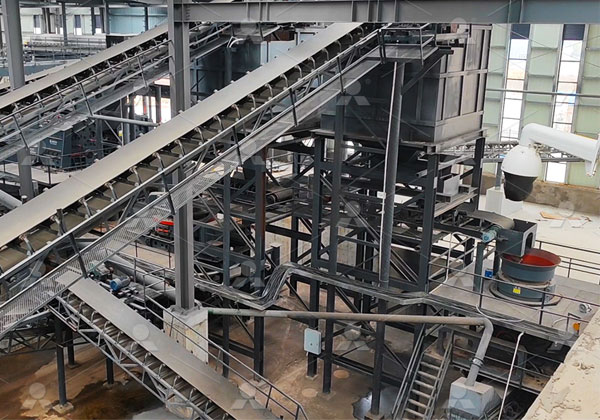A mining stationary crushing and screening plant is a critical piece of equipment in the mining industry, designed to efficiently crush and screen raw materials extracted from the earth. This integral part of the mining process plays a key role in producing the desired materials for further processing and eventual use in various industries. In this discussion, we will explore the components, functionalities, advantages, and environmental considerations associated with a typical mining stationary crushing and screening plant.

Components of a Mining Stationary Crushing and Screening Plant:
- Primary Crusher: The process begins with a primary crusher that breaks down large rocks into smaller, more manageable pieces. Common types of primary crushers include jaw crushers, gyratory crushers, and impact crushers.
- Secondary Crusher: After the primary crushing stage, secondary crushers further reduce the size of the material. Cone crushers and impact crushers are commonly used in this phase.
- Screening Equipment: Screens are employed to classify the crushed material into different sizes. Vibrating screens and deck screens are commonly used for this purpose.
- Conveyors: Conveyors transport the crushed and screened material from one stage to another, ensuring a continuous flow of material throughout the process.
- Feeders: Feeders regulate the flow of material into the crushers and screens, ensuring a steady supply and optimizing the efficiency of the plant.
- Control System: Modern plants are equipped with advanced control systems that monitor and regulate the entire crushing and screening process, optimizing performance and ensuring safety.
Functionalities and Advantages:
- Efficient Material Processing: The primary purpose of a mining stationary crushing and screening plant is to efficiently process raw materials, such as ores and minerals, into a form suitable for further processing.
- Cost-Effective Production: By automating and streamlining the crushing and screening process, these plants contribute to cost-effective production, reducing the need for manual labor and minimizing downtime.
- Versatility: These plants can handle a variety of materials, including limestone, granite, coal, and more. This versatility makes them suitable for various mining applications.
- High Capacity: Modern plants are designed for high-capacity production, ensuring that large quantities of material can be processed in a relatively short period.
- Environmental Impact: Some plants incorporate environmental controls to minimize dust, noise, and other environmental impacts associated with mining operations.
Mining stationary crushing and screening plant is a vital component in the mining industry, enabling efficient and cost-effective processing of raw materials. Advances in technology and environmental considerations have led to the development of sophisticated plants that not only optimize production but also minimize the environmental impact of mining activities. As the mining industry continues to evolve, these plants will likely play an even more central role in sustainable and responsible resource extraction.
